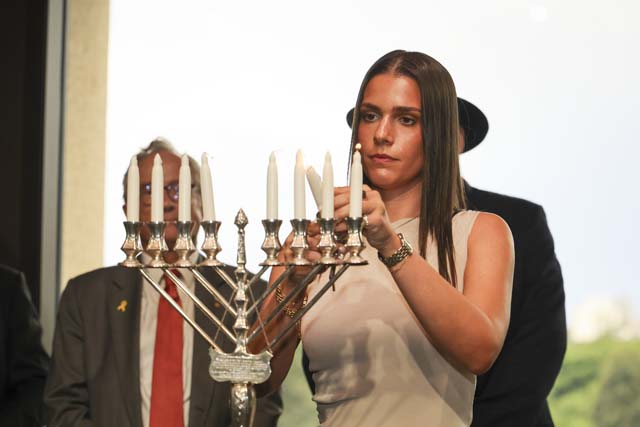The ceasefire agreement: what’s known
The release of hostages held by Hamas in Gaza is expected to begin this Sunday, marking the end of what will be 470 days of captivity.

Israelis in Tel Aviv celebrate a ceasefire agreement on Jan. 15, 2025. Photo by Gideon Markowicz/TPS-IL
Here is a breakdown of what will happen, assuming the Israeli Cabinet approves the agreement on Thursday.
Ahead of the release, the names of Palestinian prisoners set to be freed from Israeli custody will be published on a designated website. This step aims to provide time for any legal petitions against the move.
As part of the deal, 33 Israeli hostages are slated for release, comprising all women, children, and men over the age of 50. Israeli authorities estimate that most of these individuals are alive. The release will follow a structured timeline, beginning with three hostages on the first day, followed by four on the seventh day, and subsequently three each week. Living hostages are prioritized for release before any deceased individuals.
On the seventh day, following the release of seven hostages, Israel will initiate its first withdrawal from northern Gaza. Residents of the area will be permitted to return to their homes.
In the sixth week of the agreement, two long-term captives, Avraham Mengistu and Hisham al-Sayed, are expected to be freed after over a decade in Hamas captivity. Mengistu, an Ethiopian from Ashkelon, and Sayed, a Bedouin from the Negev town of al-Hura, managed to enter Gaza on their on own in 2014 and 2015 respectively. Both are mentally unstable.
During this period, humanitarian aid will also flow into Gaza, with 600 trucks entering daily, including 50 fuel trucks designated for northern Gaza.
The agreement stipulates that Israel will release 30 Palestinian prisoners for every civilian hostage freed and 50 for every soldier. Women and children under the age of 19 detained since October 7 will be among those released, with the total number of freed prisoners ranging between 990 and 1,650, depending on the number of hostages released by Hamas.
However, members of Hamas’s Nukhba Force, who participated in the October 7 attack will not be released.
Starting on the 16th day of the deal’s implementation, negotiations will begin for a second phase. This phase aims to secure the release of the remaining hostages, including young men, soldiers, and civilians, as well as the return of bodies under the supervision of Qatar and the United Nations.
Families of these hostages fear those talks will collapse before their loved ones are released.
At least 1,200 people were killed, and 252 Israelis and foreigners were taken hostage in Hamas’s attacks on Israeli communities near the Gaza border on October 7. Of the 95 remaining hostages, more than 30 have been declared dead. Hamas has also been holding captive two Israeli civilians since 2014 and 2015, and the bodies of two soldiers killed in 2014.








